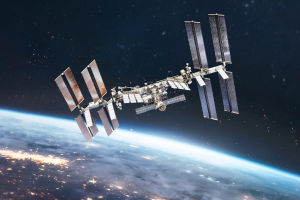Japan's recent rocket test setback is not just an isolated event but a chapter in the nation's long and complex journey in space exploration.
While such incidents may seem like failures, they are often stepping stones in a broader narrative of scientific ambition, resilience, and innovation.
Japan's space history, deeply rooted in determination and technological prowess, reveals a fascinating tale of striving to carve a niche in the global space race.
1. The Latest Setback
The latest rocket test encountered challenges that have become part of space exploration worldwide. Whether due to mechanical failures, software glitches, or environmental factors, setbacks remind us of the complexity and unpredictability of rocket science.
For Japan, these challenges highlight the balancing act of pursuing innovation while managing limited resources compared to space giants like NASA or SpaceX.
This setback underscores the stakes for Japan's space agency, JAXA (Japan Aerospace Exploration Agency), as it aims to expand its contributions to global space endeavors. Despite the setback, Japan remains steadfast in its commitment to advancing its space program.
2. Japan's Humble Beginnings
Japan's space journey began in the 1950s with small-scale rocket development. The Pencil Rocket, a tiny missile just over 20 cm long, marked Japan's first step into space technology. Developed by Hideo Itokawa, often called the father of Japanese rocketry, this project laid the foundation for future advancements.
By the 1970s, Japan transitioned to more advanced rockets, such as the Lambda and Mu series, capable of launching satellites. These milestones signaled Japan's entry into the global space race, albeit with a distinct focus on scientific research rather than geopolitical dominance.
3. Significant Achievements in Space
Despite limited budgets, Japan has achieved remarkable milestones in space exploration. The H-II series rockets, developed in the 1990s, showcased Japan's ability to produce reliable and domestically developed launch systems. The H-IIA, an improved version, remains a workhorse for satellite launches, boasting a high success rate.
Japan's achievements extend beyond rockets. The Hayabusa missions, which successfully returned asteroid samples to Earth, were groundbreaking feats of engineering and science. These missions demonstrated Japan's expertise in asteroid exploration and its contribution to understanding the origins of the solar system.
4. Challenges Along the Way
Setbacks are not new to Japan's space program. The H-II rocket program faced early failures that prompted redesigns and upgrades. Similarly, the loss of the Hitomi satellite in 2016 due to software errors was a reminder of the complexity of space missions. Each challenge has been a learning opportunity, driving improvements and innovations.
5. Japan's Vision for the Future
Japan's ambitions in space continue to grow. With plans to contribute to the Artemis program, which aims to return humans to the Moon, and ongoing development of the next-generation H3 rocket, Japan is positioning itself as a key player in international space exploration.
These efforts align with a vision of leveraging space technology for societal benefits and scientific advancements. The recent rocket test setback is not a failure but part of Japan's evolving space journey. It highlights the nation's resilience and determination to overcome challenges and contribute meaningfully to space exploration.
Behind each setback lies a history of innovation, collaboration, and an enduring passion for the stars. Japan's space history, marked by persistence and ingenuity, promises a future of continued achievements and discoveries!


